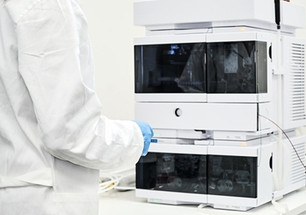Posted by Chrom Tech on 15th Oct 2025
A Sneak Peak into the Largest HPLC Industry in the World - Biotechnology Applications
HPLC in Biotechnology: Advancing Analytical Precision
Biotechnology is one of the world’s largest and most rapidly evolving industries, spanning applications in food and agriculture, pharmaceuticals, genetic research, and medical innovation. Accurate compound analysis is essential to the field, enabling scientists to identify, quantify, and purify biomolecules critical for discovery and production. High-Performance Liquid Chromatography (HPLC) remains a cornerstone analytical technique in biotechnology. Most workflows rely on reversed-phase HPLC columns for the separation and analysis of proteins, peptides, and metabolites, though other modes such as ion-exchange or size-exclusion chromatography are also used for specialized assays.
Common Applications of HPLC in Biotechnology
The versatility of HPLC allows it to support a broad spectrum of biotechnological processes:
- Food and Agricultural Testing: HPLC is employed to identify contaminants in crops, verify product safety, and measure nutritional composition. It ensures food quality and compliance with safety standards.
- Pharmaceutical Development: HPLC plays a vital role in drug discovery and quality assurance—helping researchers characterize active ingredients, monitor degradation, and study bioavailability and drug metabolism.
- Protein and Peptide Analysis: Reversed-phase columns are particularly valuable for characterizing recombinant proteins and peptides, providing reproducible separations even for complex biological samples.
From small-molecule therapeutics to biological macromolecules, HPLC remains the gold standard for ensuring purity, identity, and consistency across biotechnological applications.
Optimizing Biotechnology HPLC Analysis
Because biological samples often contain particulates or contaminants, maintaining a clean fluid path is key to protecting your HPLC column and ensuring consistent results. Implementing simple preventative measures can significantly extend system life and reduce downtime:
- Use a syringe filter before sample injection to remove particulates and protect the column.
- Install an inlet solvent filter in your solvent reservoir to capture debris and reduce backpressure.
- Follow consistent system maintenance practices to minimize costly repairs and preserve analytical performance.
Supporting Biotechnological Innovation with Chrom Tech
Whether analyzing complex protein mixtures or quantifying small biomolecules, HPLC supports the biotechnological innovations driving global progress in health, agriculture, and life sciences. Chrom Tech provides a wide range of HPLC columns, filters, and consumables to help researchers achieve reproducible, high-quality results. If you need assistance selecting the best products for your application, please reach out to our technical support team.
Frequently Asked Questions About HPLC in Biotechnology
Why is HPLC important in biotechnology?
HPLC enables the separation, identification, and quantification of biomolecules such as proteins, peptides, and metabolites. It ensures accuracy and reproducibility in analytical workflows across food, pharmaceutical, and research applications.
What type of HPLC column is best for protein analysis?
Reversed-phase HPLC columns are commonly used for proteins and peptides because they provide excellent resolution and reproducibility. Explore Chrom Tech’s HPLC column selection for biotechnology applications.
How can I extend the life of my HPLC column?
Pre-filtering samples with syringe filters and using inlet solvent filters are effective ways to protect your column from particulates and prevent performance loss over time.

